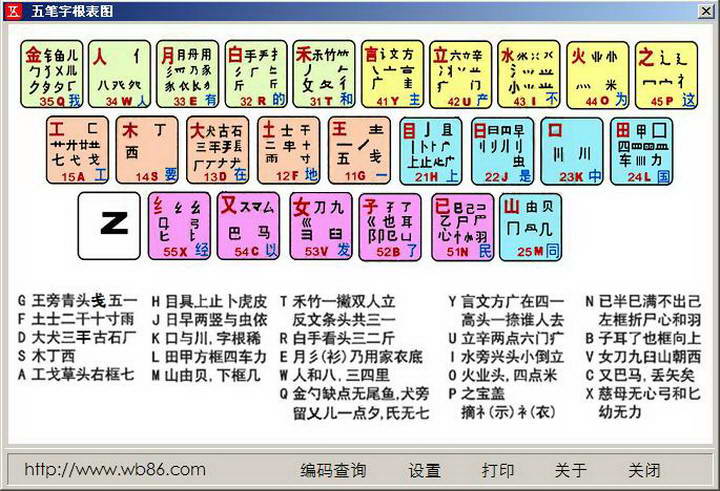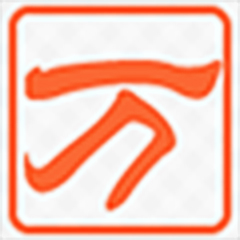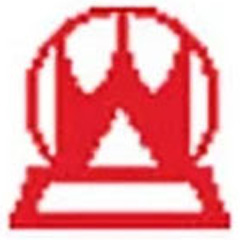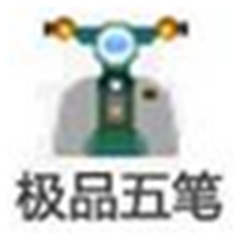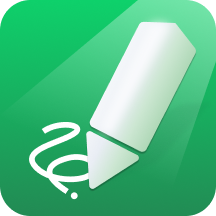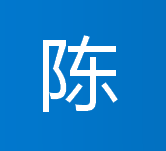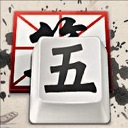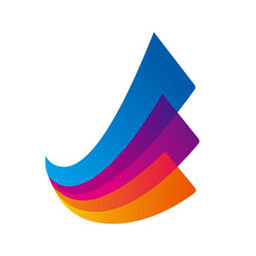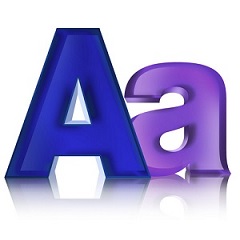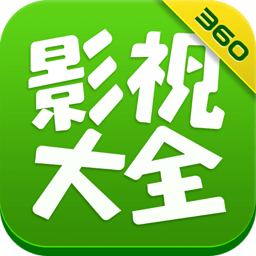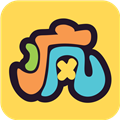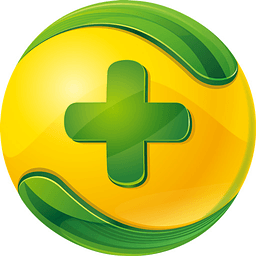Wubi root is the basic unit of Wubi input method, invented by Wang Yongmin in August 1983. Practicing the Wubi root well is the first prerequisite for learning the Wubi style. Wubi root is used in mainland China where Simplified Chinese is used. The Wubi root chart is available at a click. You can easily query the Wubi code of Chinese characters by inputting strokes. It is a good helper for Wubi learners.
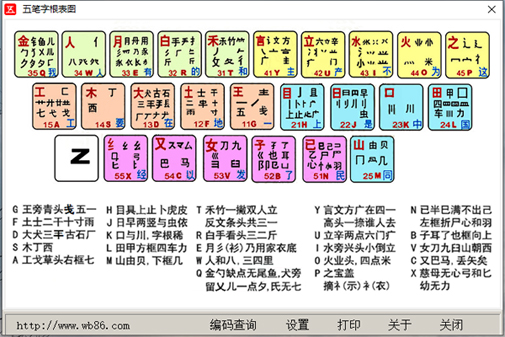
Features of Wubi root chart software
1. After starting the software, you only need to press the F12 key, and the Wubi root table and the Wubi root table formula will appear on the computer screen immediately.
2. Press F9, and the Wubi root query interface will appear immediately. You can use Chinese character strokes to query the Wubi code, which is as easy as typing on a mobile phone.
3. You can also print it. A total of 4 beautiful radical diagrams are provided for you to print (one large picture and three small pictures).
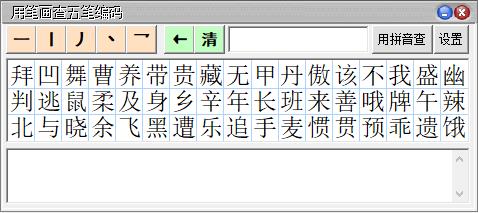
Wubi root chart installation steps
Download the software installation package from this site, unzip it and double-click to install it, click Browse to select the installation path.
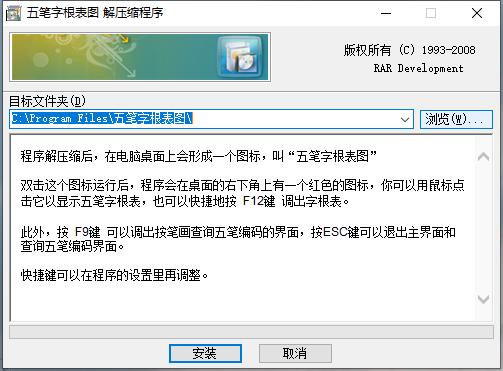
Click Install and wait patiently for a few moments before the installation is successful.
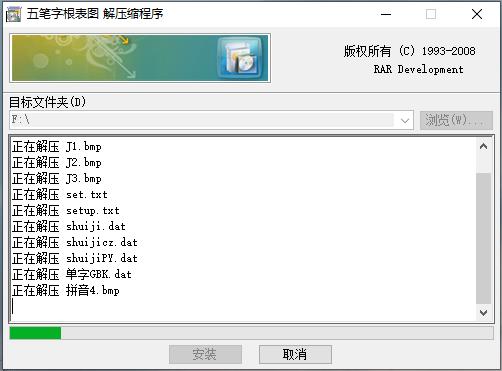
Frequently Asked Questions about Wubi Root Chart
How to learn Wubi typing?
1. Memorize the root words. This is a necessary step to learn Wubi, and it is the most important first step. If you cannot pass this step, it is impossible to learn Wubi. Memorizing the root words is boring, you need to calm down and memorize them carefully.
2. After memorizing the radicals, use the keyboard to familiarize yourself with the radicals represented by each key. You can use some specialized Wubi typing learning software to help you memorize and become familiar with the root characters. I believe it won’t take long. It only takes a few days for you to become familiar with the radicals on each key.
3. After you are proficient in the root words, start practicing the first-level short codes. There are one, two and three levels of short codes in Wubi. The first level short codes are the most commonly used 20 characters, so you need to be proficient in them first. This step is very simple. If you practice carefully and use the software, you can master it in half a day.
4. Next are the second and third level short codes. By the time you get to this step, you should be very familiar with the rules for disassembling components, otherwise you won't be able to master Wubi. Don't be afraid of slowness at the beginning, use the software to carefully familiarize yourself with the way of typing each word. This takes a lot of time to master.
5. Finally, familiarize yourself with and practice some difficult or irregular characters in a targeted manner. I believe that such difficult characters will be explained in the Wubi tutorial. Just follow the instructions and practice. After practicing the above steps, I believe you can type with Wubi. If you are used to Pinyin, you will be tempted to switch back to Pinyin when you first start typing in Wubi, which takes a lot of time to master.
6. When you become proficient in Wubi typing, typing is done completely subconsciously. There is no need to think about how to split each word. When you think of a word, your fingers will naturally type the code of the word on the keyboard. . Now you can enjoy the pleasure of your fingertips flying on the keyboard.
How to memorize the Wubi root chart?
First of all, you need to remember the horizontal area, vertical area, blanking area, pressing area, and folding area, and then memorize them according to the root list, which will be easier.
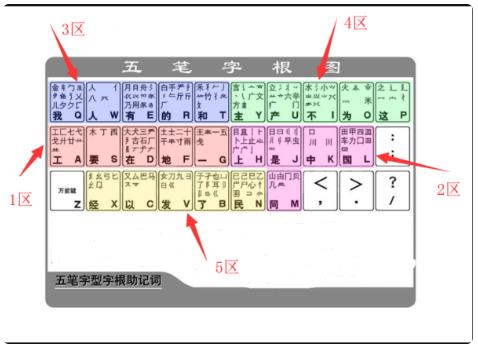
1. Arrangement of root keys in (horizontal) area
11G: Wang Pang Qingtou (concurrently) Wuyi (borrowed homonym to escape) 12F: Tu Shi Ergan Ten Cun Rain 13D: Big Dog Sanyang Ancient Stone Factory 14S: Mu Dingxi 15A: Gongge Caotou right frame seven.
2. Arrangement of root keys in (vertical) area
21H: The upper part of the head is made of tiger skin ("上" refers to the upper part of the character "and"). 22J: The two vertical lines of "Ri Zao" and "Chong Yi" 23K: The mouth and "chuan", the root of the word is sparse 24L: Tian Jia square frame four chariot force 25M: Mountains are made of shells, and the lower frame is a few
3. Arrangement of root key positions in (prime) area
31T: The two figures of Hezhu are standing together, and there are three and one in the reverse article. 32R: The three and two catties of the head are seen with white hands. 33E: The moon shirt is the bottom of the user's clothes. 34W: Renhe and eight, three and four miles. 35Q: The shortcomings of the gold spoon are the tailless fish. , the dog is left with a righteous child, a little bit of evening, no seven:
4. Arrangement of root keys in (捺) area
41Y: The words are wide and the head is high and who is going? 42U: Li Xin two point six door disease 43I: Beside the water, the headstand is small 44O: The head of the fire industry, four points of rice ("fire", "karma", "There are still four bottoms") 45P: The treasure cover is taken off (showing) (clothes).
5. Arrangement of root keys in (fold) area
51N: The body is half full and cannot come out. The heart and feathers of the corpse are folded in the left frame. 52B: The ears are also framed upward. 53V: The female sword has nine ladles (mortar). The mountain faces west. 54C: Bama is back, and the arrow is thrown away. 55X: A loving mother has no heart. Bow and dagger are young and weak.
Wubi root chart update log
1. Optimize content
2. The details are more outstanding and bugs are gone.
Huajun editor recommends:
Say goodbye to junk software, Wubi Root Chart is a green and safe software, the editor has personally tested it! Our Huajun Software Park is dedicated to serving everyone. This site also has Sogou Wubi Input Method For Mac, .NET, and Batch Butler for you to download!







